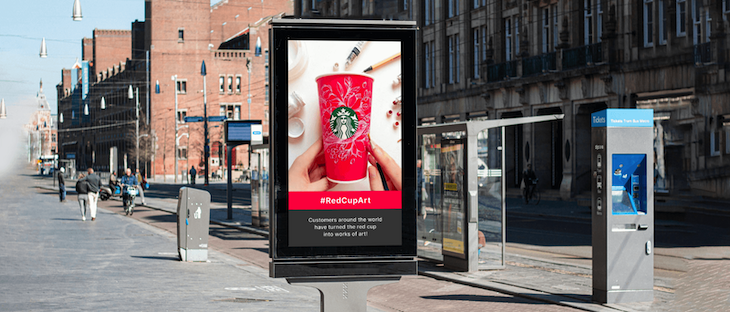Contrary to popular belief, great products don’t sell themselves.
Hundreds, if not thousands, of new products are introduced to the market daily. Customers are flooded with “next big things” constantly, and that noise makes it hard to distinguish truly useful products from mere fads.
The ability to break through this noise distinguishes products that gain traction from those that are ultimately forgotten. You break through the noise by mastering the right growth channel.
Table of contents
- What is a growth channel?
- 4 growth channels and associated strategies
- How to choose the right growth strategy
What is a growth channel?
If there are no users, there is no product.
New users can be acquired through various means: organic growth, paid acquisition, referrals, etc. We can group these customer acquisition methods into buckets, called growth channels.
In the simplest terms, a growth channel is a set of strategies to acquire new users.
4 growth channels and associated strategies
The four most common growth channels are:
Let’s take a look at each growth channel in more detail.
Performance marketing
When we talk about performance marketing, we mean paid acquisition channels.
More often than not, performance marketing focuses on various forms of digital advertising. We shouldn’t limit ourselves to this, though; out-of-home advertising, radio announcements, TV commercials, etc., also fit into the performance marketing category.
Types of performance marketing include:
- High-intent digital advertising
- Low-intent digital advertising
- Mass advertising
- Digital out-of-home advertising
High-intent digital advertising
High-intent advertising is when we display ads to users who are already searching for something similar to our product.
Take Google Ads, for example. If you’re building a fintech product, you might want to aim your campaign at people who search for phrases like “the best bank account.”
The leads you’ll capture will have a high chance of converting since these users were already looking for a bank account.
Although high-intent advertising might seem like the best way to go, it has its drawbacks:
- The competition is usually high
- You focus only on a limited group of potential customers
- You might have a product that people won’t search for naturally (i.e., they are not aware it exists)
Low-intent digital advertising
Low-intent advertising mitigates the drawbacks of high-intent advertising at the expense of precision. I’s about trying to capture users in unrelated contexts.
Take Facebook ads, for example. People don’t use Facebook to open a bank account, so there’s a high chance the ad would be irrelevant. On the other hand, these ads reach a much wider audience.
Low-intend ads convert at a lower rate than high-intent ads. In return, they enable you to:
- Capture users before they start searching for competing solutions
- Attract people that are not yet aware they need your product
Mass advertising
Radio and TV are forms of mass advertising. They work well if your value proposition is broad and appeals to many.
For example, if you’re building a general-purpose app for a specific city, promoting the product on local radio and TV might give you a boost that’s hard to reach elsewhere.
Digital out-of-home advertising
Out-of-home (OOH) and digital out-of-home (DOOH) advertising promotes your product in physical places, such as bus stations.
Although very similar to mass advertising, there are slight differences.
Below is an example of digital out-of-home advertising from Starbucks:

The most significant advantage of DOOH advertising is the ability to pinpoint the exact locations in which to display your ads. It makes an enormous difference for location-dependent products and services.
The drawback is that people have gotten used to this type of advertisement and often ignore it completely.
When to use performance marketing
Performance marketing is useful when:
- Your potential users won’t organically look for your product
- Your product has quick time-to-value, allowing you to convert users quickly
- You’re in a position to quickly generate revenue from newly acquired users
SEO
Search engine optimization (SEO) focuses on capturing organic traffic from search engines.
SEO is a topic for another blog post, but the most important takeaway is that it’s all about volume. The more content you create, the higher your chance to position high on the search results page for high-volume queries.
In other words, you won’t get thousands of users with one or two SEO-optimized pages.
There are three common strategies organizations use to create content at scale:
User-generated content
One of the best ways to create content at scale is to ask your users to do it for you. Products whose value proposition depends on creating new content are best for SEO.

Take Medium, Pinterest, and eBay, for example. People usually discover these sites by googling a related term. Then, once they get hooked, they create their own content, which helps attract new users and closes the loop.
Blog content
Creating relevant, specialized blog content is an excellent way to attract and convert users.
A well-managed blog first brings new leads (via good SEO positioning) and then positions those who run the company as field experts.
Since it requires a lot of proactive effort, we often use blogs as multipurpose tools. Besides SEO, it can serve as sales material, brand building fodder, etc.
Automatically generated content
If your product can generate hundreds of pages, search engines will love you. One way to achieve that is by building SEO-focused templates that can be automatically and scalably populated.
Say you’re a marketplace where local blue-collar workers can advertise their services. You could then automatically generate posts with titles such as: “[Name]: an expert [specialist] in [city].”
Then, if a generalist working in NYC, Philadelphia, and New Haven joins your marketplace, it could automatically create pages with titles like:
- Joe: an expert plumber in New York
- Joe: an expert handyman in New York
- Joe: an expert technician in New York
- Joe: an expert plumber in Philadelphia
- Joe: an expert handyman in Philadelphia
- Joe: an expert technician in Philadelphia
- Joe: an expert plumber in New Haven
- Joe: an expert handyman in New Haven
- Joe: an expert technician in New Haven
In this example, one new freelancer on the site helped create nine relevant, SEO-optimized pages on your site. With hundreds of freelancers, you could quickly produce thousands of pages for search engines to pick up.
When to use SEO
SEO is a good approach when:
- Your potential users organically search for your solution
- Creating content at scale is a part of your value proposition
- You can use created content
Virality
Virality involves existing users inviting more new users. Once you reach a point when every user brings along one or mote new users, you have built an endless viral loop.

There are three general types of virality:
Word of mouth
Word of mouth happens when users organically talk about your product. It occurs when you provide an experience worth telling about — something that gives the user a sense of bragging rights for having experienced your product.
An example of such an experience would be having a great holiday thanks to your Airbnb booking or finding a new partner on Tinder.
Clubhouse is another example — that product gave its users a reason to brag about being a part of an “exclusive” community.
Invites
People will proactively invite other people if they have a sufficient reason.
One example might be a social compulsion. Products such as Facebook, Signal, and Snapchat are simply better and more joyful when used with friends.
Another aspect is utility: some products, such as Zoom and PayPal, are designed to be used with others.
You can also incentivize invitations by rewarding people for bringing friends along, just like Uber does by giving free rides to inviters.
Experiential
Experiential virality happens when people discover new products from their friends passively.
YouTube is a perfect example. People don’t talk about YouTube, nor do they invite friends to discover the platform. They simply send the link with a video on YouTube, and that’s how others discover and stick to the platform.
Netflix also has some experiential virality in it. If you invite your friends over and turn on a Netflix show, you let them experience the product. Down the road, it increases the chance that they’ll buy a subscription on their own.
When to use virality
Virality is a good strategy when:
- Your target segment is inclined to self-reference — for example, teenagers often talk about apps they have on their phones
- Your product is better when used with friends
- A network effect is crucial to solving users’ pain points
Sales
A direct sales motion is the most effective way to acquire new users. It’s also the least scalable and the most expensive one.
Types of sales include:
Individual / SME sales
Here, we’re talking about selling directly to one buyer. It might be an individual user or a small company with one decision-maker you need to pitch.
Sales here happen relatively quickly, often after one or two meetings, but they rarely reach staggering figures.
Enterprise sales
Enterprise sales are hard. There are usually many decision-makers you have to win over, and the sales cycle might last for weeks, if not months.
The enormous efforts, however, are often rewarded with proportionally high revenue potential.
A good sales strategy can take you far when:
- Your potential customers require high-touch service
- You have a complex product that are hard to explain
- You expect high revenue per customer
- The number of customers you can reach is limited
How to choose the right growth strategy
A great value proposition is useless if no one discovers it. That’s why distribution is key.
There are many ways to acquire users. The most common ones are performance marketing, SEO, virality, and sales:

- Performance marketing is the right approach if your product can quickly deliver value and you can get back your money in short order. It also doesn’t require much time to see the first results
- SEO is an excellent strategy for products that naturally generate a lot of content. The focus here is to get as much relevant traffic as possible. It’s also one of the cheapest and most scalable ways to acquire users, but it often requires months of work before showing the first results
- Virality works well if the product is naturally better with friends or when you can provide an attractive incentive. We focus on maximizing the number of new users we get from every existing user
- Sales is the most expensive and least scalable channel. However, if you can get high revenue from every new customer, investing in customer acquisition is wise. Maintaining a healthy acquisition cost/revenue ratio is key to a healthy sales engine
Although all these sales might sound tempting, your product is probably best suited for one specific channel. Ultimately, it’s better to master one channel than be average in tapping all four channels.
The post Product growth channels, strategies, and examples appeared first on LogRocket Blog.
from LogRocket Blog https://ift.tt/TL42fBu
Gain $200 in a week
via Read more



